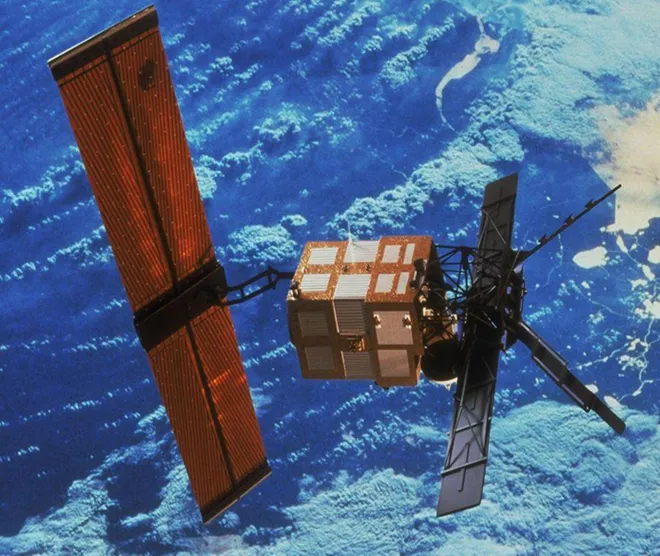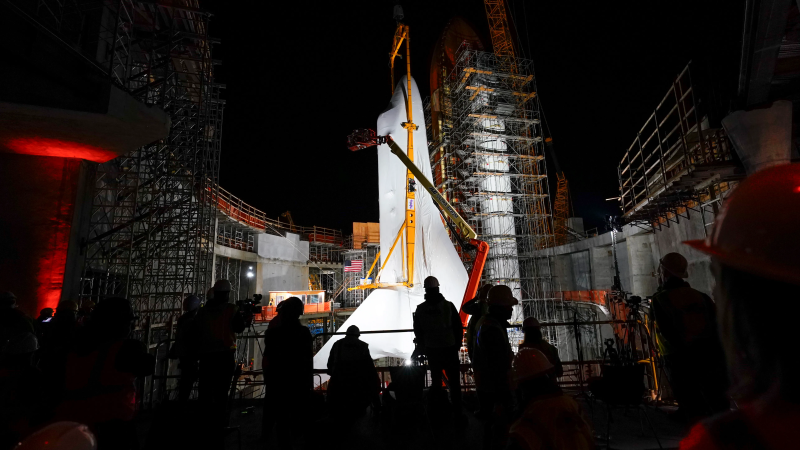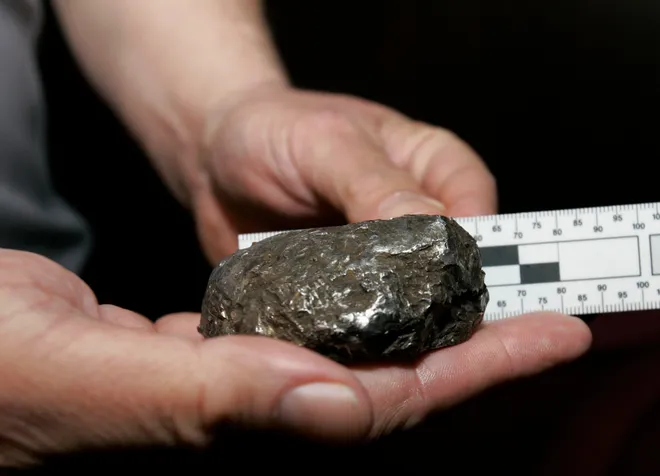A huge satellite hurtled to Earth and no one knew where it would land. How is that possible?
A defunct satellite returned to the Earth's atmosphere Wednesday, but scientists were not quite sure about exactly where, when, or even if, remnants of the decades-old spacecraft would make it all the way to Earth.
This is the kind of news that can rattle mere earthlings. But everything seems to have turned out all right.
The ERS-2 satellite was launched into space in 1995 and finished its last mission in 2011. Since then, the device has remained in Earth's orbit as "space junk," one of tens of thousands of objects-turned-useless-debris that orbit in space. The defunct satellite's itinerary for returning to Earth was pretty up-in-the-air: The European Space Agency said it made maneuvers that would bring it back into Earth's atmosphere sometime within 15 years.
That day finally came Wednesday when the satellite made its reentry over the Pacific Ocean somewhere in the massive span between Alaska and Hawaii. This, of course, after wild speculation from people around the world about whether pieces of it might somehow hit a person.
The vast majority of satellites like ERS-2 break up and disintegrate completely as they enter the atmosphere, experts say.
If anything, "it's a handful of pieces making it down, spread over a significant ground track, and that makes the probability (of being hit by debris) really low," said Carolin Frueh, a professor of aeronautics and astronautics at Purdue University who studies human-made objects and their positions in near-Earth and the "cislunar" region, between the Earth and moon.

Why is it so hard to predict where pieces might land?
The European Space Agency said it would be difficult to predict exactly where the satellite would reenter Earth's atmosphere because of "how difficult it is to forecast the density of the air through which the satellite is passing," but as the reentry time got closer, the predictions became more precise.
Larger objects like ERS-2 are tracked, but variations in atmospheric density and the fact that they can "tumble and break" make it hard to pinpoint where exactly an object will reenter, according to Nilton Rennó, a professor of climate and space sciences and engineering at the University of Michigan.
Another factor that complicates making a calculation is that ERS-2's reentry was uncontrolled, Frueh said. ERS-2 has long been out of fuel and is essentially "dead." A controlled reentry would have allowed a certain amount of steering of ERS-2.
Any pieces that didn't get burned up in the atmosphere would spread out "somewhat randomly" over a span of hundreds of kilometers, the space agency said.
VISUAL:See where the dead satellite was predicted to reenter Earth's atmosphere
How worried should you be about things falling from the sky?
The European Space Agency said that as far as it can tell, there was no damage to property reported after ERS-2's reentry. Experts say it's extremely unlikely, but not entirely impossible, that a piece of space junk could fall out of the sky and hit someone.
Objects larger than roughly 2 metric tons within Earth's orbit pose a little concern, but most objects would be controlled if and when they reentered the atmosphere, Frueh said. ERS-2 clocks in at just over that. It was about as long as a city bus and weighed over 5,000 pounds. But the defunct satellite still didn't cause scientists to worry about human safety because it was expected to mostly burn up before it arrived, leaving only a few smaller pieces, if anything, to make it all the way down.
"Since most of the Earth is covered by oceans, (these objects) usually fall over the oceans, posing little risk to humans," Rennó said.
Smaller satellites reenter Earth's atmosphere all the time, experts said, and they very rarely cause any problems. These falling-object events will become more frequent as more satellites are sent into space, Frueh said. More worrisome for experts is the amount of atmospheric pollution that comes when those objects burn up on reentry.

Has anyone ever been hit by falling space debris?
There are documented cases of small objects from spacecraft falling on a person or near a populated area, but none have killed anyone or usually caused nothing more than a minor injury. There are also several documented cases of space debris being found near populated areas that did not cause any damage.
"Even if something touches the ground, it's not going to make a big crater or something, because the object or the pieces are too small for that," Frueh said.

- Five Japanese sailors were "seriously injured" when a piece of a Soviet spacecraft hit their ship in 1969, the New York Times reported at the time. The Times said it was "thought to be the first authenticated case of terrestrial damage caused by falling space objects."
- In 1997, Oklahoma woman Lottie Williams was hit but not injured by a falling piece of a U.S. Delta II rocket while she was at a park.
- A metallic object slightly larger than a golf ball that came in through the roof of a Freehold Township, New Jersey, home in 2007 was deemed most likely to be a piece of space junk, NBC News reported at the time. It didn't hurt anyone.
- A young boy in northern China received minor injuries when a piece of a satellite that had recently been launched fell above his village in 2002, CNN reported at the time, citing Chinese media.
- A large, pointy black object found on an Australian sheep farm in 2022 was determined to be likely debris from a SpaceX Dragon craft, The New York Times reported.
Disclaimer: The copyright of this article belongs to the original author. Reposting this article is solely for the purpose of information dissemination and does not constitute any investment advice. If there is any infringement, please contact us immediately. We will make corrections or deletions as necessary. Thank you.





